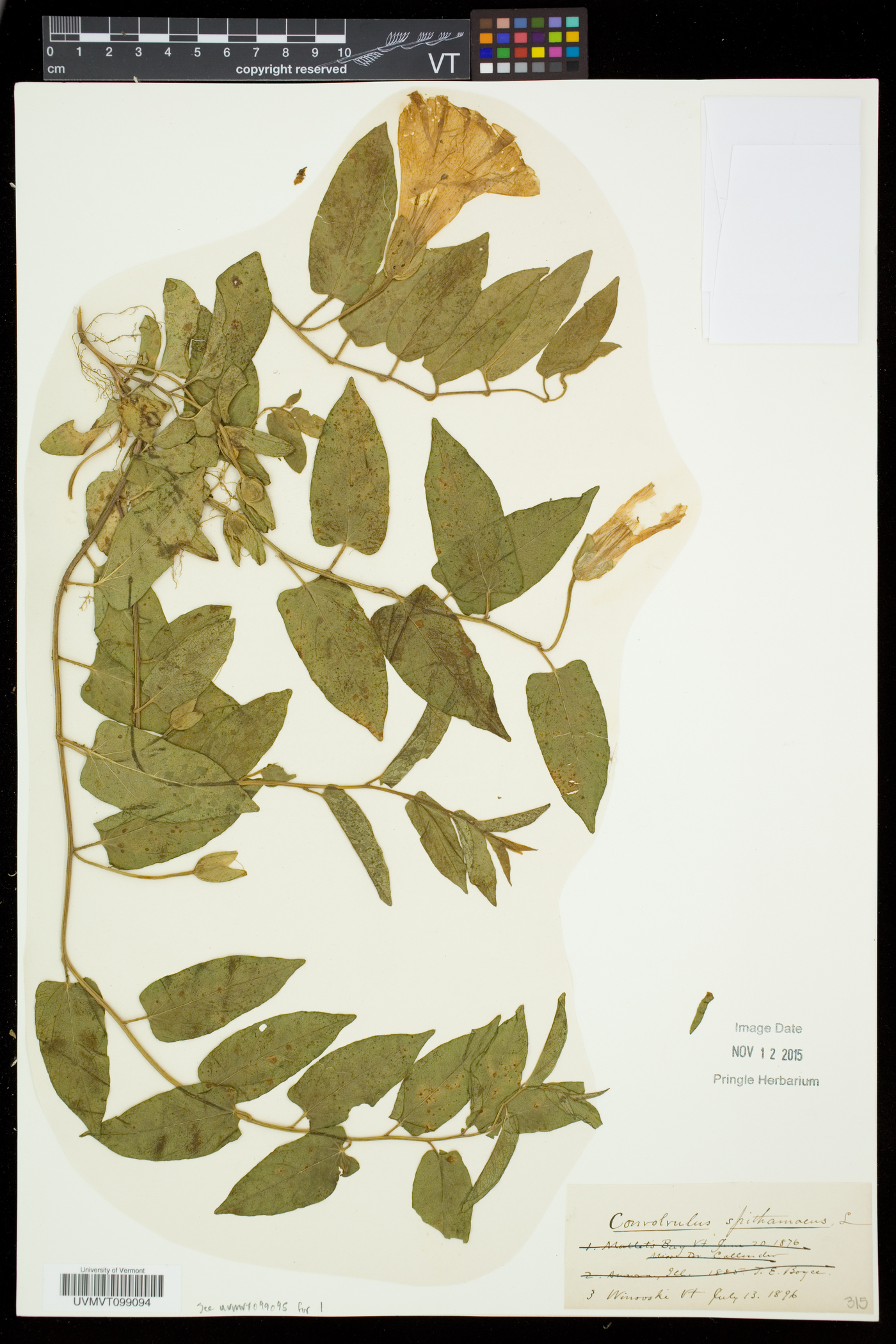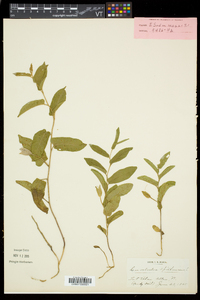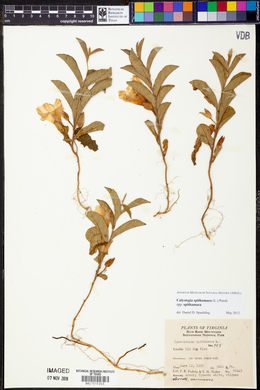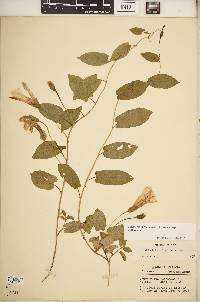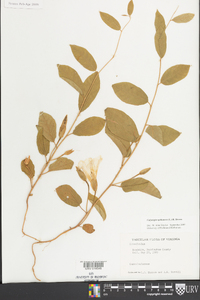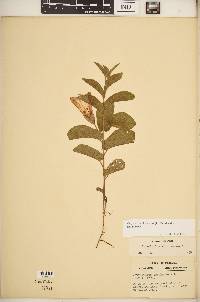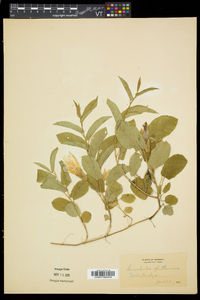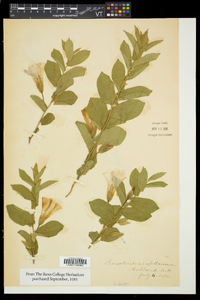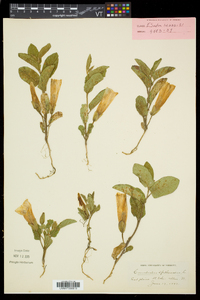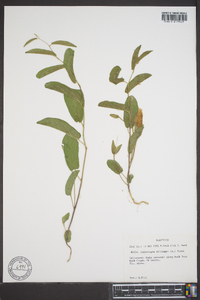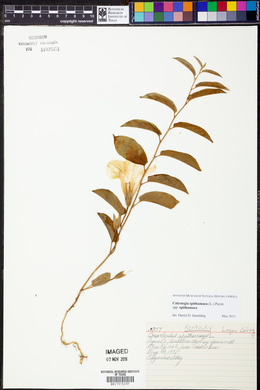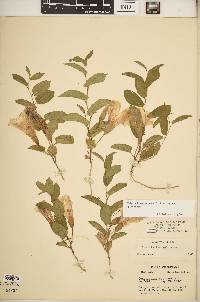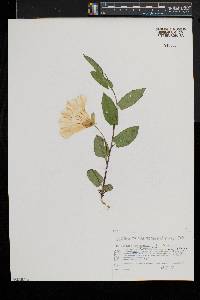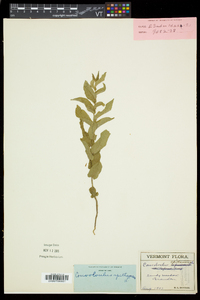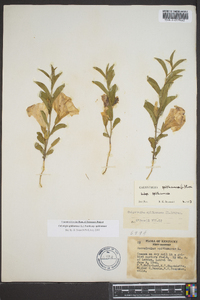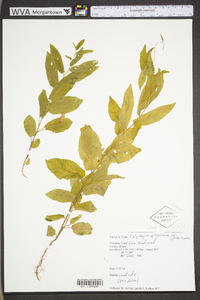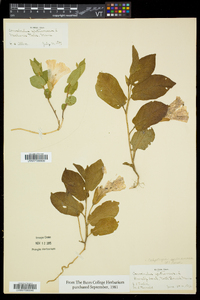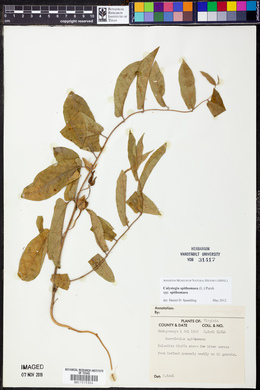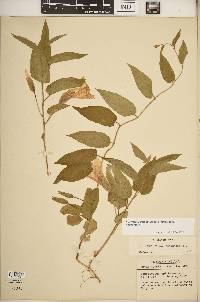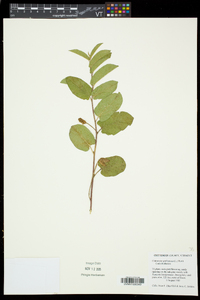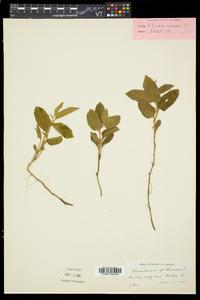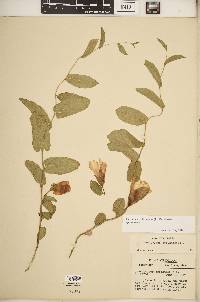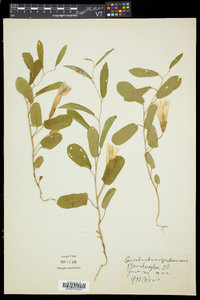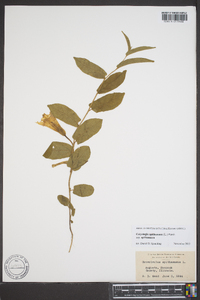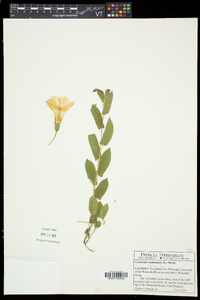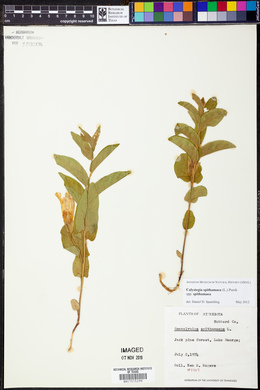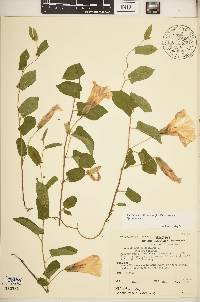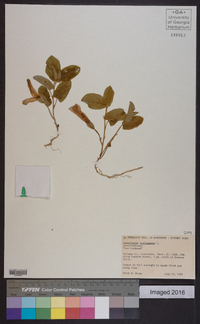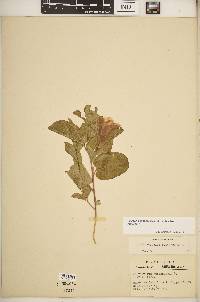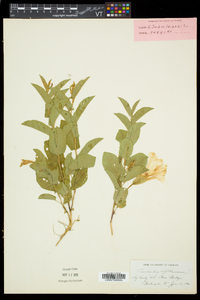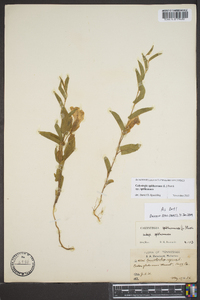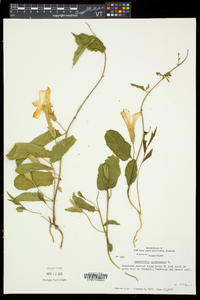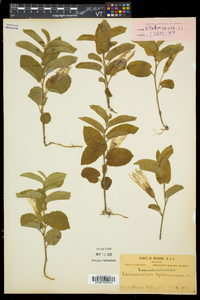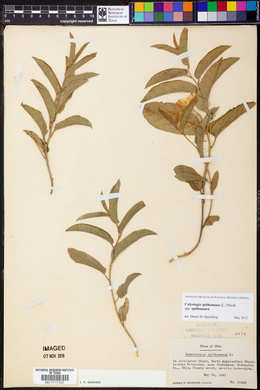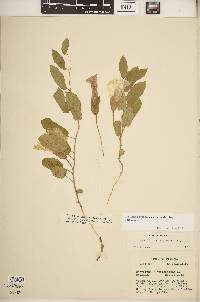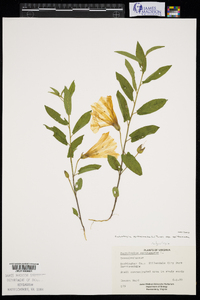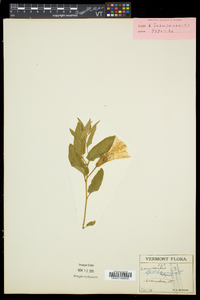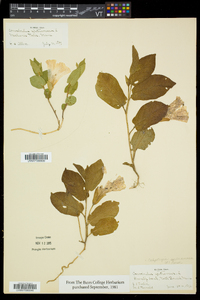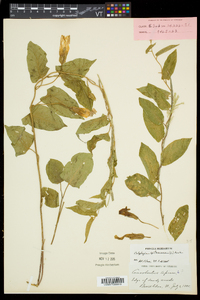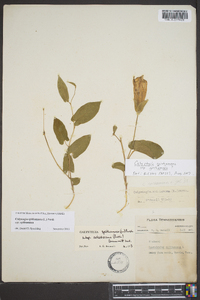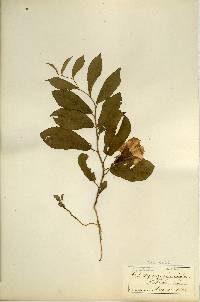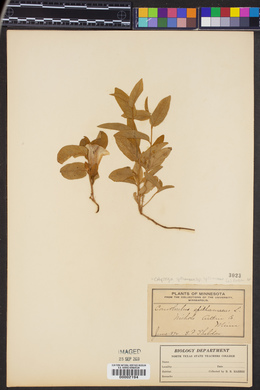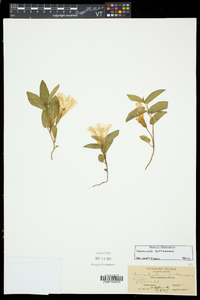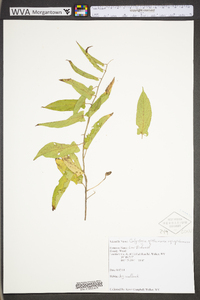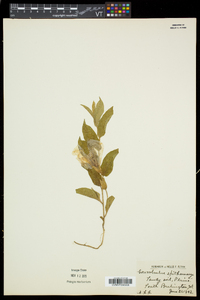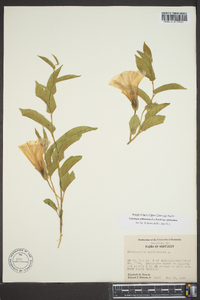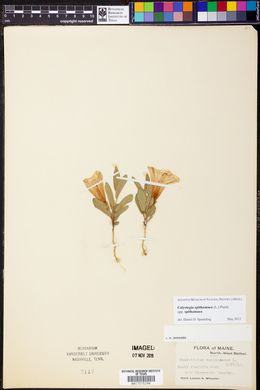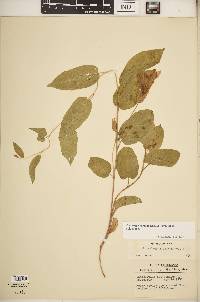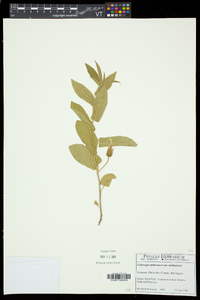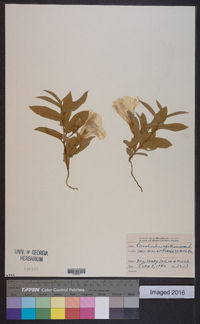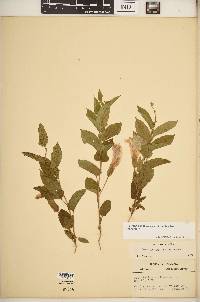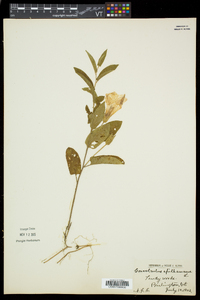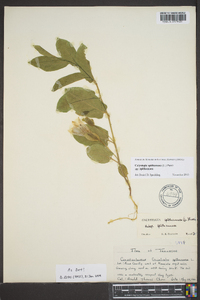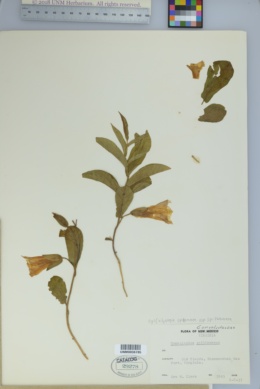
|
|
|
|
Family: Convolvulaceae
Low False Bindweed
|
Perennial herb 70 cm - 0.5 m tall Stem: single or with a few branches from near base, short, hairy, erect, but often somewhat twisted toward tip and then declining well above flowers. If the stem is cut or broken, it exudes a milky sap. Leaves: alternate, short-stalked (much shorter than blade), non-toothed, hairy, 3 - 8 cm long, longer than wide, oblong to more inversely egg-shaped, with somewhat rounded to flat or slightly indented base, and blunt-pointed or rounded tip. Flowers: one to four, singly in lowermost leaf axils, erectly long-stalked (longer than subtending leaf stalk), white or pale pink, showy, 4 - 7 cm long, radially symmetric, tubular to funnel-shaped. Each flower is immediately subtended by two large (1.2 - 3 cm long), often hairy, non-toothed, oblong or egg-shaped (broad base and narrowed tip) bracts which hide the sepals. Sepals: five, green, more or less lance-shaped, but obscured by much larger subtending bracts. Petals: five, but fused into a long tube with expanded limb, which may be shallowly five-lobed or merely wavy along edges. Stamens: five, attached to inside base of petal tube, then separating, but not extending beyond petal tube. Pistil: with one, single-chambered, superior ovary; and a single, slender style which ends in two oblong, blunt, and somewhat cylindric stigmas. Fruit: stalked, several-seeded, single-chambered, rounded capsules. Similar species: Calystegia spithamaea ssp. spithamaea is the only subspecies of C. spithamaea reported in the Chicago Region. It may be possible to confuse this taxon with C. macounii, except that species is hairless, the leaf stalks are much longer, and the plant is only to be expected in weedy areas such as along railroads. The other two subspecies of C. spithamaea recognized in North America include the more southeastern and Appalachian subspecies, C. spithamaea ssp. purshiana, which differs by being a bit taller, having longer leaf stalks and more strongly heart-shaped leaf bases, and tending to be more hairy. The other subspecies, C. spithamaea ssp. stans, tends to be found north of the Chicago Region, however, it is unclear what characters distinguish it from the other two subspecies. Flowering: June Habitat and ecology: Rare, found in open woods, prairies and on clay slopes or in sandy soils. Occurence in the Chicago region: native Etymology: Calystegia is a combination of the Greek word kalyx meaning the whorl of sepals (calyx) of a flower, and stegon, meaning cover; together referring to the bracts that conceal the calyx. Spithamaea means "a span high", referring to the low stature of this plant. Author: The Field Museum From Flora of Indiana (1940) by Charles C. Deam This species is variable in the density of its pubescence, the shape of the leaves, and the length of the stem. Generally in poor clay soil in bare places on open wooded slopes and rarely in sandy soil in prairie habitats. ...... Indiana Coefficient of Conservatism: C = 8 Wetland Indicator Status: n/a |

